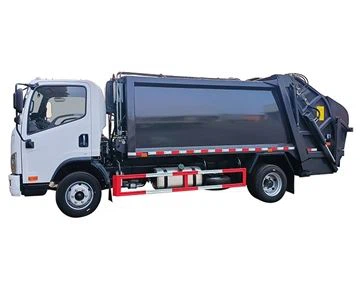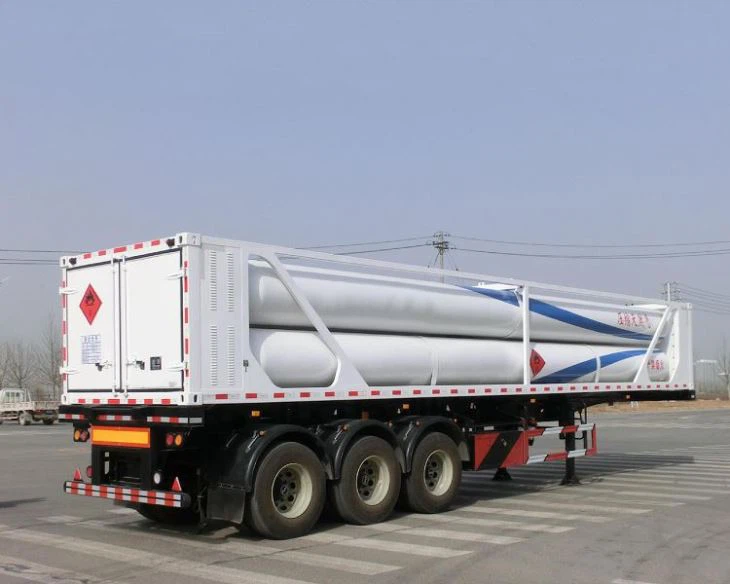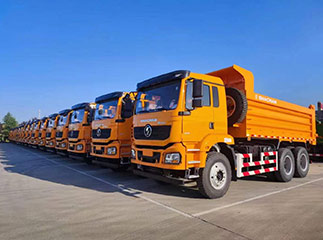Understanding Trash Truck Bodies: Essential Insights and Best Practices

Introduction
When it comes to waste management, the trash truck body is a critical component that significantly impacts efficiency, durability, and overall performance. In this article, we will delve into various aspects of trash truck bodies, exploring the different types, materials used, and maintenance tips, while providing practical examples to enhance understanding. Join us as we uncover the details behind this essential piece of equipment in the waste collection industry.
What is a Trash Truck Body?
A trash truck body refers to the large compartment attached to a garbage truck designed to collect and transport waste. It is specially engineered to accommodate various waste types, ensuring both safety and efficiency in the waste management process. The design and functionality of a trash truck body can vary based on the vehicle’s purpose and the nature of the waste being transported.
Components of a Trash Truck Body
- Compartment: The main area where waste is stored.
- Loading Mechanism: Systems such as hydraulic arms or compactors used to load waste into the body.
- Dump Mechanism: A feature that allows for unloading waste effortlessly.
- Structural Frame: Provides support and structural integrity to the truck body.
Types of Trash Truck Bodies
Understanding the different types of trash truck bodies helps businesses select the right one for their waste management needs. Here are the most common types:
1. Front Load Trash Truck Bodies
Front load trucks are equipped with a mechanism in the front, allowing them to pick up dumpsters directly. Ideal for commercial waste collection, these bodies are designed for easy loading and unloading.
2. Rear Load Trash Truck Bodies
These are the most common type of trash trucks. The loading process happens from the back, making them suitable for residential areas. Their design accommodates manual and automatic loading processes.
3. Side Load Trash Truck Bodies
Side load trucks have mechanisms that allow for waste collection from the side of the vehicle. This type is advantageous in tight spaces, such as narrow city streets where larger trucks cannot fit.
4. Roll-off Truck Bodies
Roll-off trucks are designed to transport large containers called roll-off dumpsters. They are often used for construction and large-volume waste collection, providing flexibility in managing different types of waste.
Materials Used in Trash Truck Bodies
The materials chosen for manufacturing trash truck bodies directly affect durability, maintenance, and cost-effectiveness. Some common materials include:
1. Steel
Steel is known for its strength and durability, making it a popular choice for trash truck bodies. It can withstand heavy loads but may require regular maintenance to prevent rust.
2. Aluminum
Aluminum bodies are lighter than steel versions, providing better fuel efficiency. They are inherently resistant to corrosion, making them suitable for various weather conditions.
3. Composite Materials
Composite materials combine different substances to achieve a balance of strength, weight, and durability. These bodies can be tailored to specific operational needs and are generally lower maintenance.
Factors to Consider When Choosing a Trash Truck Body
Selecting the right trash truck body requires consideration of several factors:
1. Waste Type
The type of waste being collected—solid, liquid, or hazardous—plays a crucial role in determining the optimal truck body type and material.
2. Volume of Waste
Understanding the average volume of waste generated can help in selecting the appropriate size and capacity of the truck body, ensuring efficiency in operations.
3. Terrain and Accessibility
Consider the geographical terrain where the truck will operate. Trucks designed for urban areas may differ significantly from those intended for rural or industrial settings.
4. Budget Constraints
Lastly, evaluate budget constraints while factoring in maintenance costs, fuel efficiency, and long-term durability of the body materials.
Maintenance Tips for Trash Truck Bodies
1. Routine Inspections
Conduct weekly inspections to identify any signs of wear and tear, especially on the hydraulic systems and loading mechanisms.
2. Cleaning
Regularly clean the body to prevent waste buildup that could lead to corrosion or odors. Use high-pressure hoses for thorough cleaning.
3. Lubrication
Apply lubrication to moving parts such as hinges and hydraulic arms to ensure smooth operations and reduce wear.
4. Rust Prevention
For steel bodies, apply protective coatings and paint to prevent rust and maintain the structural integrity of the body.
Safety Features in Trash Truck Bodies

Safety is paramount in waste management operations. Here are some critical safety features commonly found in trash truck bodies:
1. Reflective Markings
Reflective paint and markings enhance visibility, especially during poor weather or nighttime operations.

2. Emergency Stop Features
Emergency buttons or switches to halt all functions of the truck body instantly can prevent accidents during operations.
3. Compaction Safety Systems
Compactors should have safeguards to prevent jamming and ensure the safety of operators and maintenance personnel.
4. Load Sensors

Load sensors can alert operators when they exceed weight limits, helping prevent overloading that could compromise safety.
Innovations in Trash Truck Body Design
The waste management industry constantly evolves, introducing innovations designed to improve the efficiency and effectiveness of trash truck bodies:
1. Advanced Compaction Systems
Modern compaction technologies use sensors and automated processes to enhance compacting efficiency, reducing the frequency of pickups.
2. Smart Trash Truck Bodies
These are equipped with GPS and IoT technology for route optimization, minimizing travel time and fuel consumption.
3. Eco-Friendly Materials
Manufacturers are exploring the use of recycled and eco-friendly materials for truck bodies, reducing the environmental impact.
Cost Analysis of Trash Truck Bodies
Understanding the costs associated with trash truck bodies is critical for businesses. Here’s a breakdown of potential expenses:
| Type of Trash Truck Body | Average Cost ($) | Maintenance Costs ($/Year) |
|---|---|---|
| Front Load | 100,000 – 200,000 | 5,000 – 15,000 |
| Rear Load | 90,000 – 180,000 | 4,000 – 12,000 |
| Side Load | 110,000 – 210,000 | 6,000 – 14,000 |
| Roll-off | 120,000 – 250,000 | 5,500 – 13,000 |
FAQ Section
1. What is the average lifespan of a trash truck body?
The lifespan of a trash truck body typically ranges from 7 to 15 years, depending on materials, usage, and maintenance.
2. How often should a trash truck body be cleaned?
It is recommended to clean a trash truck body after every collection route or at least once a week to prevent waste buildup.
3. Can I customize my trash truck body?
Yes, many manufacturers offer custom designs based on specific needs such as additional storage compartments or enhanced loading systems.
4. What are the benefits of using aluminum for trash truck bodies?
Aluminum bodies are lighter, which improves fuel efficiency, and they are resistant to corrosion and require less maintenance compared to steel.
5. Are there eco-friendly options for trash truck bodies?
Yes, many manufacturers are exploring the use of recycled materials in trash truck body construction to promote sustainability.
6. How do I choose the right trash truck body for my business?
Evaluate factors like the type of waste, volume, terrain, and budget constraints to choose the right trash truck body that meets your operational needs.
